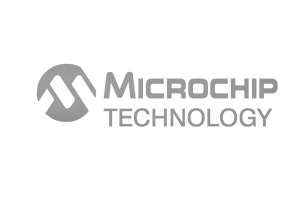ATMEGA128RFR2-ZU Overview
The ATMEGA128RFR2-ZU is a high-performance 8-bit microcontroller combining an AVR core with an integrated 2.4 GHz IEEE 802.15.4-compliant radio transceiver. Designed for low-power wireless communication applications, it delivers efficient processing alongside robust RF capabilities in a single compact package. This integration simplifies system design, reduces component count, and lowers overall power consumption. Ideal for embedded systems requiring reliable wireless connectivity and precise control, it supports multiple power management modes and advanced peripheral sets. For more detailed product insights, visit the Produttore di circuiti integrati.
ATMEGA128RFR2-ZU Technical Specifications
| Parametro | Specifiche |
|---|---|
| Core Architecture | 8-bit AVR RISC |
| Tensione di esercizio | 1.8 V to 3.6 V |
| CPU Frequency | Up to 16 MHz |
| Memoria flash | 128 KB |
| SRAM | 16 KB |
| EEPROM | 4 KB |
| Integrated RF Transceiver | 2.4 GHz IEEE 802.15.4-compliant |
| Tipo di confezione | 64-pin QFN |
| Intervallo di temperatura operativa | Da -40 a +85 °C |
| Power Consumption (RX) | 15 mA typical |
| Power Consumption (TX) | 17.4 mA typical at 0 dBm output |
ATMEGA128RFR2-ZU Key Features
- Integrated AVR 8-bit Core: Offers efficient instruction execution and facilitates rapid development with a rich instruction set, enhancing system responsiveness.
- Embedded 2.4 GHz RF Transceiver: Enables seamless wireless communication compliant with IEEE 802.15.4 standards, critical for robust mesh networking and low-power IoT applications.
- Basso consumo energetico: Multiple power-saving modes reduce energy use, extending battery life in portable and remote devices.
- Rich Memory Resources: 128 KB Flash and 16 KB SRAM support complex firmware and data buffering, enabling feature-rich applications without external memory.
- Flexible Peripheral Set: Includes timers, USARTs, SPI, and ADCs, offering extensive interfacing options for sensor integration and control tasks.
- Robust Operating Conditions: Industrial temperature range ensures reliability in harsh environments, suitable for demanding industrial and commercial deployments.
- Compact 64-pin QFN Package: Facilitates space-saving PCB designs while maintaining thermal performance and signal integrity.
ATMEGA128RFR2-ZU Advantages vs Typical Alternatives
This device stands out by integrating a proven AVR microcontroller with a compliant 2.4 GHz RF transceiver, reducing system complexity and cost compared to separate components. Its low power consumption and extended industrial operating range provide enhanced reliability and efficiency over typical wireless MCU solutions. The combination of memory capacity and peripheral flexibility supports diverse applications, making it a superior choice for embedded wireless designs requiring precise control and connectivity.
🔥 Prodotti più venduti

IC caricabatterie lineare BQ24075 di Texas Instruments - Pacchetto QFN da 5 x 4 mm

Modulo sensore di corrente INA219 di Texas Instruments - Pacchetto SOIC, monitoraggio di precisione

Riferimento di tensione di precisione LM4041 di Texas Instruments - Pacchetto SOT-23

Amplificatore operazionale audio OPA2134 di Texas Instruments - Doppio, ad alte prestazioni, pacchetto SOIC-8
Applicazioni tipiche
- Wireless Sensor Networks: Ideal for battery-powered sensor nodes requiring low latency and reliable data transmission within mesh or star topologies, such as environmental monitoring and smart agriculture systems.
- Home and Building Automation: Enables wireless control of lighting, HVAC, and security systems, providing seamless integration with existing infrastructure.
- Industrial IoT Devices: Suitable for factory automation and asset tracking where robust wireless communication and extended temperature operation are essential.
- Remote Controls and Consumer Electronics: Supports wireless interfaces in devices demanding compact size and low power consumption, such as smart remotes and wearable technology.
ATMEGA128RFR2-ZU Brand Info
As part of the AVR microcontroller family, this product combines legacy AVR architecture with advanced RF capabilities developed by a leading semiconductor manufacturer. It leverages the company’s expertise in microcontroller design and wireless communication to deliver a highly integrated solution tailored for low-power, connected embedded systems. This device reflects the brand??s commitment to providing robust, scalable, and energy-efficient components for next-generation industrial and consumer electronics.
FAQ
What wireless standards does this microcontroller support?
The integrated transceiver supports the IEEE 802.15.4 standard at 2.4 GHz, which is commonly used in low-rate wireless personal area networks (LR-WPANs). This compliance ensures compatibility with protocols like Zigbee and other mesh networking technologies.
🌟 Prodotti in evidenza

"Acquista il comparatore di tensione di precisione MAX9312ECJ+ in contenitore DIP per prestazioni affidabili".

QCC-711-1-MQFN48C-TR-03-1 Bluetooth Audio SoC with MQFN48C Package

Modello 0339-671-TLM-E - Pacchetto TLM-E ad alte prestazioni per funzionalità avanzate

1-1415898-4 Alloggiamento connettore, filo elettrico-scheda, presa, confezionato
How does the power consumption affect battery-operated designs?
Designed with multiple low-power modes and typical RX current around 15 mA, this MCU helps extend battery life significantly. Efficient power management makes it suitable for applications requiring long-term operation without frequent battery replacement.
What development tools are available for programming and debugging?
The device is supported by a range of standard AVR development tools, including Atmel Studio and compatible debuggers. These tools enable easy firmware development, debugging, and performance optimization.
📩 Contattaci
Can this microcontroller handle complex sensor data processing?
With 128 KB of Flash and 16 KB of SRAM, it offers sufficient memory for moderate complexity sensor data processing and buffering. The AVR core??s efficient instruction set aids in real-time control and signal processing tasks.
What operating temperature range is supported for industrial use?
The device is specified to operate reliably between -40??C and +85??C, making it suitable for various industrial and outdoor environments where temperature extremes are common.





